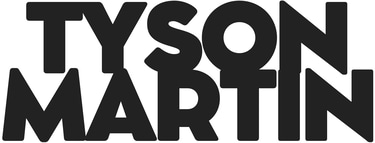The CISO’s Role in Empowering Creativity, Not Containing It
Too often, security is viewed as a brake pedal. The team that slows things down, says no, or arrives too late. But in today’s fast-moving digital organizations, that mindset is not only outdated — it’s dangerous.


The CISO’s Role in Empowering Creativity, Not Containing It
Too often, security is viewed as a brake pedal — the team that slows things down, says no, or arrives too late. But in today’s fast-moving digital organizations, that mindset is not only outdated — it’s dangerous.
The modern Chief Information Security Officer (CISO) is not a roadblock. Done right, the CISO is a strategic enabler: a partner in experimentation, a builder of digital safety nets, and a guide who helps innovation happen without fear.
This post explores how security leaders can shift their posture from "contain and control" to "enable and empower," fostering a culture where teams feel confident pushing boundaries while keeping the organization safe.
Rethinking the Narrative: Security as a Catalyst for Innovation
Creativity thrives in environments of psychological safety — where people feel free to take risks, test ideas, and explore new paths. Ironically, security has a key role in creating that safety.
By reframing security as a foundation for creativity, CISOs can:
Help teams move faster by baking in protection from the start
Reduce fear of experimentation by clarifying guardrails
Turn compliance into a creative constraint, not a blocker
Security becomes the trusted safety net that lets innovation flourish.
Partnering Early in the Creative Process
The earlier security shows up, the more value it can add.
Instead of waiting until review or release stages, security teams should embed themselves in:
Product design sprints
Engineering stand-ups
Marketing launch planning
Customer experience brainstorms
Ask: "What are we building? Who is it for? Where could it go wrong?"
This creates shared context and prevents surprises later. When security understands the intent, they can shape the outcome.
Creating Guardrails, Not Gates
Security doesn’t need to dictate outcomes — it needs to define safe boundaries.
Clear guardrails allow:
Developers to experiment with new code patterns inside sandboxed environments
Marketers to test customer engagement strategies with anonymized data
Designers to push creative UX without violating privacy
Rather than one-size-fits-all restrictions, offer tiered risk models:
"Green zone" ideas that are low-risk and move quickly
"Yellow zone" ideas that need a brief consult
"Red zone" ideas requiring formal review
This gives teams autonomy and encourages informed risk-taking.
Speaking the Language of Creators
Security can feel inaccessible when it leans too heavily on technical jargon. CISOs who connect with creative teams succeed by translating risk into relevant narratives.
Instead of "data exfiltration risk," say:
"We could lose customer trust if this prototype leaks."
Instead of "access control issues," say:
"Let’s make sure only the right people see this content before launch."
By focusing on outcomes that matter to the team, security becomes a collaborator, not a critic.
Showcasing Security Wins as Creative Enablers
Too often, security only gets airtime when something breaks. Change that.
Celebrate moments where security helped:
Speed up a launch by pre-clearing vendors
Enable a feature through privacy-preserving architecture
Earn executive buy-in with a clear risk model
Tell stories where security helped say "yes."
Building Champions Across Creative Functions
A CISO cannot empower creativity alone. It takes allies.
Identify and develop "security champions" inside:
Design
Engineering
Marketing
Product Management
These champions:
Translate team needs to security
Spread awareness of secure practices
Help co-create solutions that fit the creative workflow
Security becomes a distributed, integrated mindset.
Final Thoughts: Leading with Trust and Possibility
The organizations that thrive are the ones that create space for bold ideas — and protect that space wisely.
The CISO of today is not the department of "no." They are a builder of trust, a weaver of safety nets, and a co-pilot in innovation.
When security shows up early, speaks in outcomes, and defines flexible boundaries, they empower creativity instead of containing it.
And that shift makes all the difference.
About the Author
Tyson Martin is a cybersecurity and trust executive who helps creative, product-driven organizations turn security into an accelerator. He writes about aligning security leadership with innovation, culture, and user-centered thinking.
